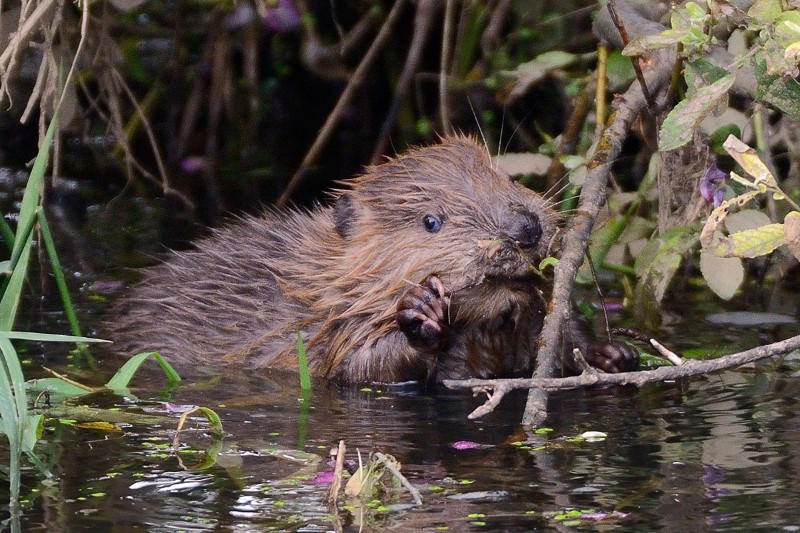Sometimes you have one plan in your head all laid out, (like for example expecting so many for dinner and getting out the right number of plates) and then a new piece of information descends upon you like a fresh dusting of snow that means that changes everything (you find out there are two more guests coming than you expected and you no longer have enough plates in one set so you decide to use paper).
This was my morning when I was prepared to write about one thing and saw this delight instead and it just changed everything.
The strange, compelling artistry of “beaver sculptures”
 Some years ago, during a canoe trip down the Dumoine River in Quebec, I saw a piece of wood floating in the water. It had been worked by beavers, and, stripped clean, looked lovely. I picked it up and brought it along — across several portages. This was the beginning of what I call my collection of “beaver sculptures.” It has since grown to include well over 100 pieces.
Some years ago, during a canoe trip down the Dumoine River in Quebec, I saw a piece of wood floating in the water. It had been worked by beavers, and, stripped clean, looked lovely. I picked it up and brought it along — across several portages. This was the beginning of what I call my collection of “beaver sculptures.” It has since grown to include well over 100 pieces.
I never take them off the dams or the lodges, on principle: that is for their construction. (Besides, those have no protruding parts, and so are less interesting.) Some I pluck straight out of the water, which usually means that they have been left there recently, perhaps the previous night.  The bark is partly or wholly removed, which renders the wood either clean beige (sometimes close to white) or else interspersed with clusters of bark that can be brown, black, and occasionally red.
The bark is partly or wholly removed, which renders the wood either clean beige (sometimes close to white) or else interspersed with clusters of bark that can be brown, black, and occasionally red.
Other sculptures I find on the land, and occasionally under water. Some of these have been around for a long time, which has turned them gray, dark brown, even black.
I have a snobby friend who insists that this is not art. “Okay,” I reply, “then it is craft.” That is the difference between beaver sculptures and driftwood: both can be lovely, but only one has been worked by skilled craft, not just by nature and time. It’s amazing how many different shapes can come from these mammals, simply engaged in gathering food and building structures.
have a snobby friend who insists that this is not art. “Okay,” I reply, “then it is craft.” That is the difference between beaver sculptures and driftwood: both can be lovely, but only one has been worked by skilled craft, not just by nature and time. It’s amazing how many different shapes can come from these mammals, simply engaged in gathering food and building structures.
 I personally believe that some of these sculptures merit display. I check every day for an email from the New York Museum of Modern Art begging me to exhibit them. Otherwise, the exhibit belongs in a museum of nature. In the meantime, 35 of them are displayed in the country house: on the walls, the floor, the fireplace, hanging from the ceiling — wherever.
I personally believe that some of these sculptures merit display. I check every day for an email from the New York Museum of Modern Art begging me to exhibit them. Otherwise, the exhibit belongs in a museum of nature. In the meantime, 35 of them are displayed in the country house: on the walls, the floor, the fireplace, hanging from the ceiling — wherever.
Ahhh Henry! What a wonderful collection and appreciation you’ve shared with us. I love your curation and wrote this morning to thank him. He already wrote back and said there were more of his specimens to admire here. As the official ‘curator’ of our beavers work at I have seen countless children finger and admire those chew marks at events around the state. One chew we used for display was even stolen because it was so much admired!
In our city we have become expert fans of this art and the backyard looks like a beaver-munched museum. I personally have received gifts of chewed sticks beaver friends have brought me from Oregon, England and Georgia. And I have photos of beaver chews from as far away as the Ukraine. This remains one of my favorites, although Henry says he’s not sure he even believes it’s real.

Here at beaver central we are especially fond of chews-you-can-use. In accordance with our mission we like to showcase how wildlife appreciates and incorporates these pieces as well.












































